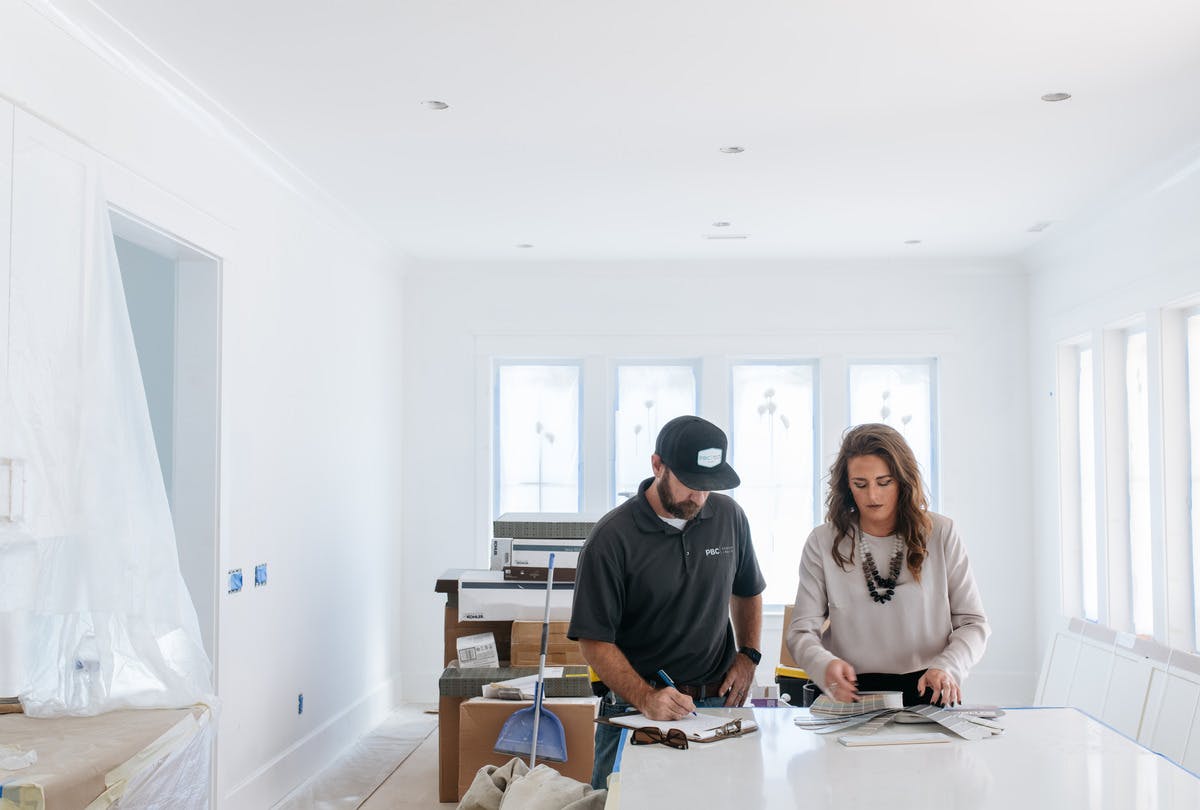How to Handle Non-payment from Construction, Renovation and Build Clients
Learn your options and the steps to take if your construction, renovation or build clients don’t pay, and how you can prevent non-payment in the future.

The information contained in this article should not be relied upon as legal, business or tax advice. We encourage you to seek guidance from your legal counsel, business or tax specialist with regard to how the information contained in this article may or may not apply specifically to your business.
It’s something you’ve probably dreaded in your construction, build or renovation business – what should I do if a client can’t or won’t pay me for my work? While each non-payment scenario you encounter will be different, in this article we’ll go over some common best practices for when a client misses a payment, as well as proactive measures to take to help prevent non-payment from clients in the first place. Let’s get into it.

5 steps to take if your building work client misses a payment
Before you take action, take a deep breath and remember that your client may have simply forgotten to make their payment. So it’s best not to jump right to worst-case scenarios or make any hasty steps. Instead, take a strategic approach that gradually escalates your level of response depending on the unique non-payment situation you’re facing.
1. Email them once the payment due date has been missed
After your client has missed their payment, give them a 3- to 7-day grace period and then send them a reminder email about the payment. You don’t want to email right away or wait too long, so weigh your level of comfort and choose a timeframe that feels right for you. Your email should be polite, professional, clear and direct, but not at all harsh or overbearing. You’re simply giving your client the benefit of the doubt and sending them a courtesy reminder.
2. Call them a few days after your first reminder email
So you don’t appear to be harassing your clients, and to give them some leeway, it’s best to wait a few days after sending your initial reminder email before calling to enquire/remind about the missed payment. If you do happen to get a hold of your client, remember to practice good customer service and keep the conversation courteous and professional. The goal is to maintain a positive working relationship with your client while helping to remove any barriers to non-payment (such as questions about how to pay, if a pay schedule can be arranged, etc.).
If your client doesn’t pick up, leave a clear and polite message mentioning the late payment, the date that it was due, and reference the email you sent as a reminder. Lastly, make sure to mention to have them please email or call back with any questions. That’s it. For your first initial non-payment contact with your clients, it’s best to keep it short and sweet.
3. Send a debt collection letter or email
After you’ve emailed your polite yet professional reminders and made some cordial follow-up calls, you will now need to resort to a stronger measure to recoup payment for your work – sending a debt collection notice. This action will usually take place around 60 to 90 days after the payment deadline has passed and will include the following items:
- The details of your original invoice (including the payment due date and accepted payment methods)
- A new final deadline notice for receiving payment
- The steps you will take if the payment is not received by the above deadline
4. Hire outside help
If you’ve tried all you can to reach out to your client directly, it’s now time to work with outside professionals. But before you reach out to a lawyer (we’ll cover that later), you can consider working with factoring services or collection agencies to obtain your payment. These types of businesses have dealt with all kinds of non-payment situations in a variety of industries and are experts at collecting payments for their clients. Of course, this will cost you, as these companies will require a fee or percentage of payment for their services.
5. Deliver a final demand notice
When you issue a final demand notice to your clients, you will officially inform them that you intend to take them to court. So make sure you’re already working with a lawyer or prepared to take these steps before sending the notice. Your lawyer can write the notice for you or you can write it yourself. Keep in mind that a notice from your lawyer can send a stronger message, especially if your client has been entirely unresponsive or uncooperative.

Common reasons why construction, renovation or build clients don’t pay
When a client wants more work on your project
If you’ve already collected payment up front for your project, but your client has requested more build work, you may find yourself in a non-payment situation if your client mistakenly thought the additional work was included in the up front payment. You can avoid this headache by either charging by the hour or requiring clients pay before any extra work is complete.
When different client changes/needs arise during the project
If your client has requested various changes to the project that you’ve accommodated but haven’t charged for until the end, you could end up facing non-payment challenges. Sometimes clients don’t read the fine print about the project scope, but you can protect yourself by collecting payments before you complete any change requests along the way. You can also charge an hourly rate to make project payments easier and more straightforward. And if you charge a flat fee, make sure you stipulate how many changes are allowed or that any additional changes outside of the original project plan/scope will require payment for your services.
When a client refuses to or can not pay
Unfortunately, sometimes a client will be dissatisfied with your work. In these cases, communication and active listening are crucial so you can understand the disconnect between what the project scope detailed, what you provided and how that doesn’t match your client’s expectations. Once you have a better understanding of these areas, you can best determine how to proceed. If you feel you didn’t quite hit the mark, then revising the troubled portion of the project pro bono may be necessary. Or, if you feel your client’s assessment of your work is unreasonable given the project plan that was outlined, you can walk your client back through the initial plan to help them understand your perspective. If your client is still dissatisfied after discussing and additional work is needed, you can negotiate a rate for your revision work.
On other occasions, you may encounter a client who has underestimated the final project cost or has run into financial troubles. If your client is unable to pay due to financial hardships, you can try to provide a payment plan that can work with your client's needs before taking further action.
In any of these cases, you should stop work on the build project until the issues have been addressed and both parties can reasonably move forward. But if you've exhausted your options above, and your construction, renovation or build client still won’t or can’t pay you, here are a couple of actions to consider:
- Take your client to small claims court – In Ireland you can take your case to small claims court, either on your own or with your lawyer present. You can do so with or without a lawyer given your needs, time commitment and financial situation.
- Hire a lawyer – If you’re unable to pursue your case in small claims court, consider working with a lawyer who specialises in small business and debt collection law. Make sure to also weigh lawyer fee costs with the settlement amount so that it’s worth it financially.

Ways to prevent missed payments from construction, renovation and build clients
Outline expectations before your project begins
Being as detailed as possible in your proposal, contract, service agreement and any other documents provided to your client will help eliminate confusion about what the scope of your work entails, as well as your business’ policies regarding change orders, invoices, payments, etc.
Set up fee structures and document fees in your service agreement
Make sure to include your fee structure and various fees in your service agreement so these are crystal clear to your client.
Charge clients a retainer and bill up front
You can remove the potential for non-payment by obtaining a retainer from your clients up front before you initiate any work on your build projects. This way you can start projects with cash in your pocket, and you won’t have to worry about not getting paid at the end of the month for work you’ve completed.
Revamp your client contracts
In light of all this, it may be time to spruce up your client contracts to help protect your business. Here’s how:
- Write thorough project descriptions
- Itemise your services
- Provide a clear outline of your change order process
- Outline and give instructions for your payment process
- Clearly stipulate your missed/non-payment policy and your late fees
- Outline your policy for non-payment and the steps you will take if payment isn’t made
Simplify your payment process
One of the best ways you can prevent missed payments is to make it easy for clients to pay you. Houzz Pro software helps you create professional invoices in a snap. Build a payment schedule to help keep your billing on track, and save time with automated payment requests and invoicing. Explore more ways Houzz Pro makes getting paid easier – and start a free trial!

Conclusion
While no building professional wants the hassle of not getting paid, with a little work, you can empower yourself and your business with proactive measures and have a game plan in place for if/when non-payment issues occur.


